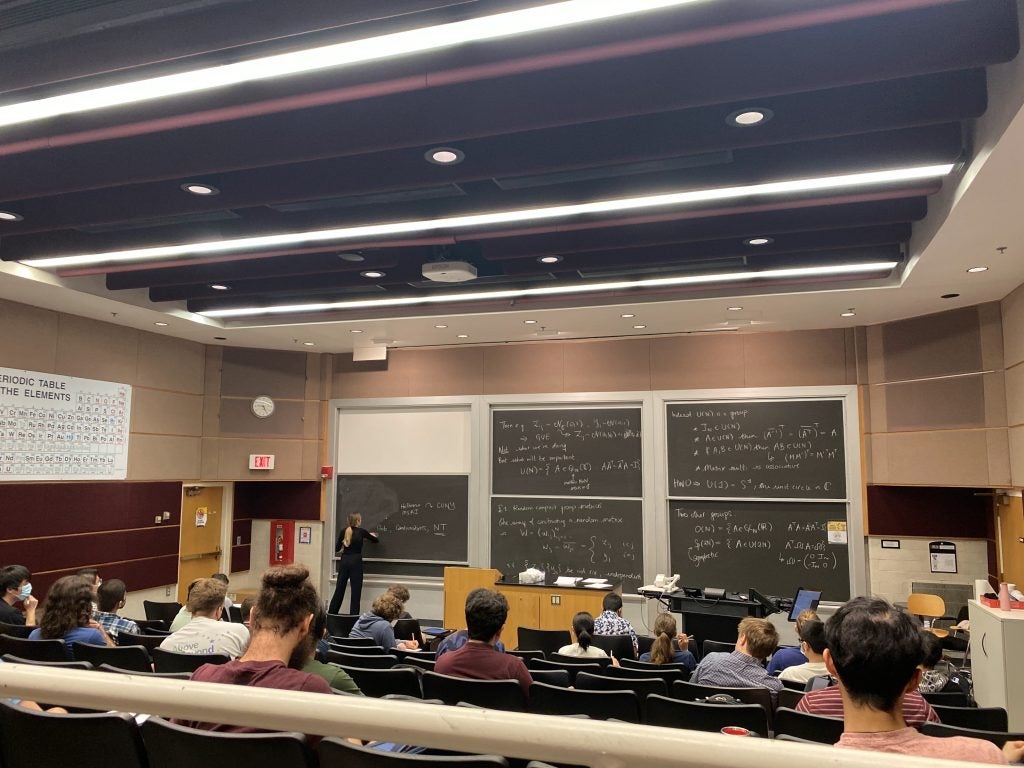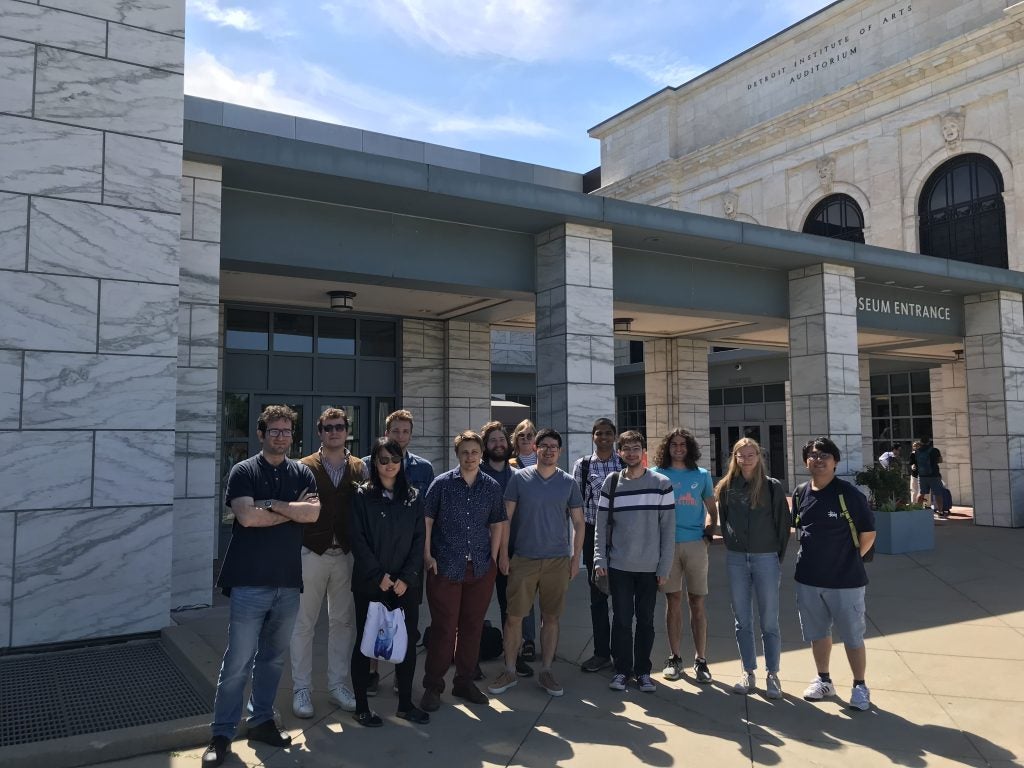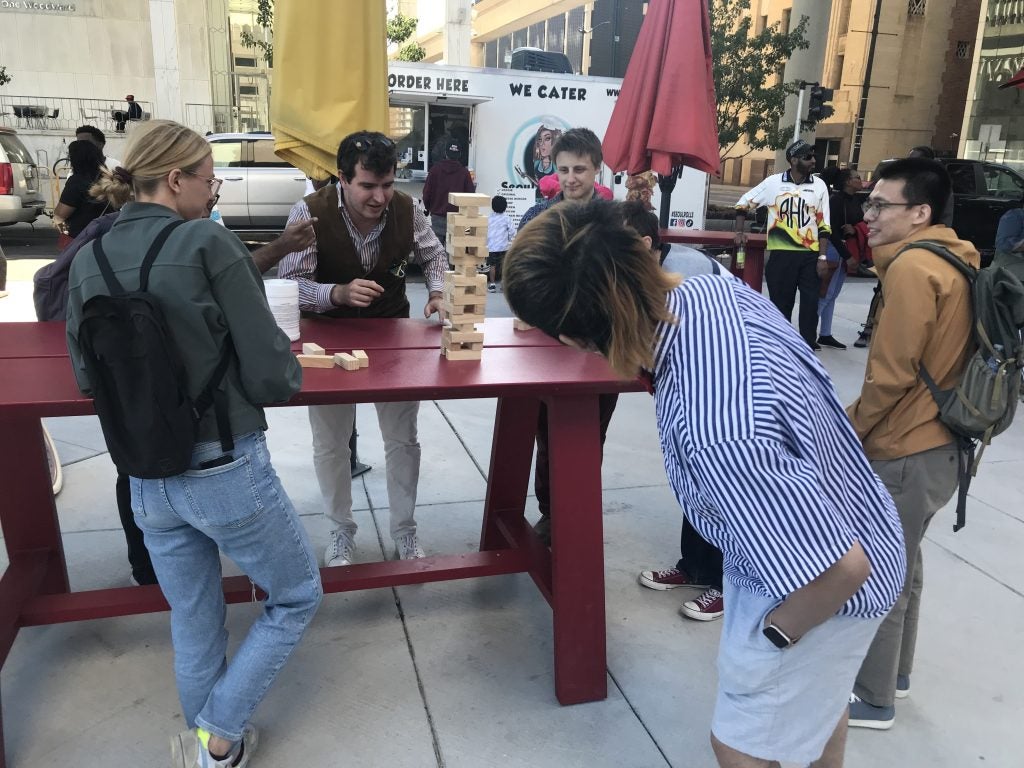Forty-nine graduate students and beginning postdocs from 32 (^1) universities around the world participated in the 2022 Random Matrix Theory (RMT) Summer School program at the University of Michigan’s Ann Arbor campus from June 13-24. The participants applied and were accepted into the rigorous 2-week program that each day included two lectures and complimentary group problem solving sessions.


Large random matrices appear all over the place in mathematics, science, and engineering and have found numerous applications in probability, number theory, statistical physics, high energy physics, statistics, and data science. Some of the applications are often unexpected: Bailey’s lecture discussed a connection between random matrices and number theory, which was first observed by Hugh Montgomery of the University of Michigan during his conversation with the great physicist Freeman Dyson in 1973 at the Institute for Advanced Study.
Since random matrices are so fundamental, they have been studied from many different viewpoints. Researchers in random matrix theory can be experts in a diverse range of fields such as probability, differential equations, mathematical physics, combinatorics, applied mathematics, and statistics. This situation can be overwhelming to graduate students and junior researchers. Even though they learned one aspect of random matrix theory, it can be difficult to learn complementary techniques which require an entirely different background.
The bi-annual RMT Summer School, organized by Jinho Baik (Mathematics), Andrei Prokhorov (Mathematics), and Raj Rao Nadakuditi (Electrical and Computer Engineering), is motivated by this observation. The program’s goal is to provide an opportunity for participants, who already have some basic working knowledge of RMT, to learn new techniques different from their own background and to understand how, when, and where these techniques may be applied. The program was successfully held previously in 2016 and 2018. The topics of this year’s summer school were:
Week one:
- Random Matrices and Logarithmically Correlated Fields – Emma Bailey, City University of New York
- Geometric Methods in Random Matrix Theory – Nick Cook, Duke University
Week two:
- Spin Glasses and Related Applications – Wei-Kuo Chen, University of Minnesota
- Invariant Ensembles and Orthogonal Polynomials – Peter Miller, University of Michigan
In addition to the daily group problem-solving exercises, the participants stayed in the university dormitories and enjoyed a weekend outing together to the Detroit Institute of Arts. The program culminated in a farewell dinner in Ann Arbor. An important component of the Summer School was for the participants to leave knowing a larger cohort of students and future-faculty-colleagues-in-training in a way that will equip them for a lifetime of collaboration and camaraderie. Housing the participants in the same facility where they met in the in-dorm lounges for the problem sessions helped build community among the attendees. As one participant stated in their evaluation, “The experience has been great [in] particular after the years of COVID where people new to the field had very little opportunity to meet other people in the research field. The different groups one worked with over the two weeks helped a lot with connecting with other people.”


The 2022 RMT Summer School was supported by the University of Michigan’s Michigan Center for Applied and Interdisciplinary Mathematics (MCAIM), Department of Mathematics, Department of Electrical Engineering and Computer Science, and the National Science Foundation Division of Mathematical Sciences (DMS – 1951530).
Notes
1. Cornell University, Duke University, Indiana University Purdue University Indianapolis, KAIST, KTH Royal Institute of Technology, KU Leuven, Massachusetts Institute of Technology, McGill University, Michigan State University, New York University, Northwestern University, Penn State University, Princeton University, Queen Mary, University of London, Stanford University, University of Bristol, University of California, Davis, University of California, Irvine, University of California, San Diego, University of Central Florida, University of Chicago, University of Cincinnati, University of Colorado Boulder, University of Copenhagen, University of Kansas, University of Michigan, University of Minnesota, University of South Florida, University of Toronto, University of Utah, University of Virginia, and Yale University


